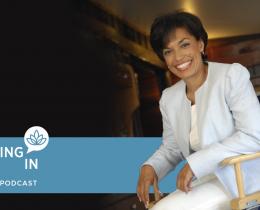"Darcy...”
“Yeah, Mom?”
I momentarily held the undivided attention of my teenage daughter. Her thumbs, free of their ubiquitous texting keypad, quietly dangled by her side. Her computer and its omnipresent Facebook page were completely out of sight. She was even devoid of those little earbuds that seemed to constantly deliver the latest bass-thumping popular melodies directly into her brain. I had almost forgotten what she looked like without all these adolescent accoutrements. As we sat down together on the burgundy leather sofa in our living room, I realized this fleeting state of electronic dislocation was my chance to hatch a plan I had been formulating for the past several weeks. Carpe diem.
“How would you like to write a book together?”
“About what?” I asked my mom. Write a book? This was a real surprise. I felt a bit suspicious, but still curious. I love to write, and Mom kept telling me I was really good at it. I like writing poetry, fantasy, and sci-fi, though. The books Mom wrote were all nonfiction. I wondered what we could possibly do together.
“Well....” I hesitated. If I wanted her to commit to any extra work outside her busy schedule at school—not to mention work alongside her mother—I had to make this really great. “It would be about women as leaders,” I continued, “a mother-daughter investigation into leadership styles and structures.”
“Leadership?” I blurted. It came out as if I had a bad taste in my mouth—which I did. I couldn’t imagine a more boring topic to write about. What is there to say about leadership anyway? When you’re in charge, you just get things done, right? Who wants to talk about that?
“We could interview CEOs, politicians like Hillary Clinton, military leaders, and other amazing women.”
The more I thought about this whole idea, the more I didn’t like it. I could tell my face showed how I felt.
Her furrowed brow told me I was losing her fast. “Um...we could find women leaders all around the world!” I said impulsively, frantically casting the ultimate bait.
“Really? Would we get to travel a lot?” I hadn’t thought about that. Heck, I’d write about the mating habits of tsetse flies if I got to go to Africa to do it!
Darcy has always been fascinated with countries and cultures outside her own. Since she was a little girl, she would, for her own entertainment, create entire civilizations from scratch. She designed their social structures and even generated fictional languages and alphabets for their communications. I hoped I was offering her a chance to explore her lifelong passions.
But this project wasn’t just about the influence it would have on Darcy. I wanted to do something that could have a potent impact on an alarming trend I had witnessed in workplaces across the country: far too many women appeared to be making a choice not to apply for top leadership positions when presented with the opportunities to do so.
Had the pendulum swung back from the newly liberated, ambitious, trailblazing women leaders of previous generations toward a more cautious view of leadership for their daughters in generations X, Y, and Z? Had their mothers paid such a high price for their achievements in terms of family life, harassment at work, and lack of recognition that many of their daughters were now ambivalent about aiming for the top and pushing wider the doors their mothers had opened?
At the same time, I still saw plenty of women who were willing to scale the heights no matter what the costs. But these “go-getters” faced a whole new set of frustrations and challenges their mothers wouldn’t have even imagined. They weren’t yet ready to throw in the towel, but they were pretty close to strangling somebody with it.
A number of books on the shelves today have made deep, scholarly investigations into these phenomena and drawn helpful intellectual conclusions. I wanted to do something different, something that would be more fun and more dedicated to showing how women today view themselves as leaders. I wanted to pull readers into the adventure of leadership. I wanted to strike at the heart—at the emotion of the quest. If I could somehow create a book that would help women of all ages and backgrounds to become more energized and, at the same time, better prepared to step up and take the lead in their communities, jobs, and homes, I knew our world would be better for it.
Ultimately, my daughter, too, would be entering the world of the workplace. By taking her on a tour to meet women who were successfully navigating their way around the rocks and hard places of leadership, perhaps we could create a call to action for her and for women everywhere to take their places at the highest levels of every sector in society.
This project, then, was a bit of a Trojan horse. On the one hand, the saga of a mother and daughter journey could seduce female readers, who might never bother to read the Harvard Business School dissertations on the subject, into a meaningful conversation about leadership. At the same time, if Darcy met a series of brilliant, accomplished women—people even a cynical teen would be in awe of—perhaps they could tell her all the things I’d like her to know—and more.



